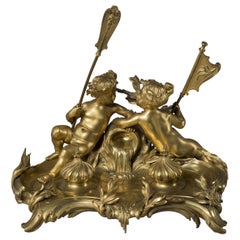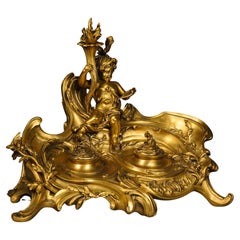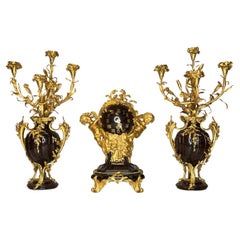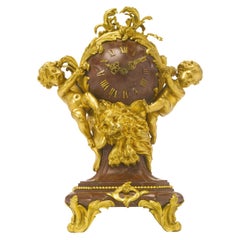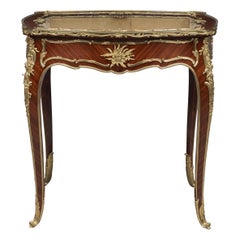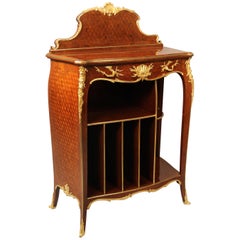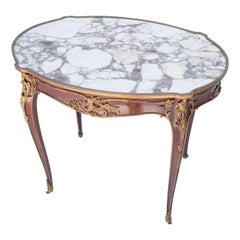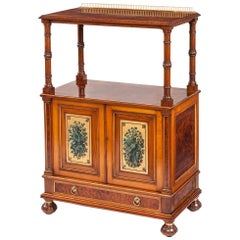Léon Messagé Furniture
Léon Messagé had a brilliant, but short-lived career. He is best known for his incredible sculptural collaboration with François Linke for the 1900 Paris Exposition Universelle. A gifted sculptor, Messagé was also responsible for much of the design and creative work for Roux et Brunet and Joseph-Emmanuel Zwiener. Messagé enjoyed great success as a designer/sculptor before he collaborated with Linke. Indeed, he was mentioned as a Gold Medal winner at the 1889 International Exhibition and was especially praised for his work on a cabinet by Zwiener. He came into contact with Linke in 1885, and it appears from then on Linke employed him regularly. Messagé was primarily influenced by Rococo ornament, but he strove to re-interpret it. He did not produce slavish copies, and his original approach can be appreciated in Linke's celebrated Grande Bibliothèque and Grand Bureau exhibited at the 1900 Paris Exposition Universelle. Several drawings by Messagé are recorded, and after his success at the exhibition of 1889, he was encouraged to publish his designs. Cahier de dessins & croquis, style Louis XV: bronzes, orfèvrerie, décoration, meubles was first published by the sculptor himself, from his Paris address of 40 rue Sedaine. There were five sections with an elaborate title page surmounted by the sculptor's cipher or talisman of a wing, a pun on his name as the messenger to the Gods, a motif he used many times on the handles of furniture designed for Linke. As a sculptor, Messagé was trained to produce a wax maquette or model before working on a piece. For Messagé, it was not just a matter of producing decorative mounts the piece was conceived as sculpture, bronze, timber and marquetry as one.
Late 19th Century French Louis XV Antique Léon Messagé Furniture
Bronze
19th Century French Rococo Antique Léon Messagé Furniture
Ormolu
Early 20th Century French Louis XV Léon Messagé Furniture
Marble, Bronze
19th Century French Antique Léon Messagé Furniture
Bronze
20th Century French Louis XV Léon Messagé Furniture
Bronze
Late 19th Century French Belle Époque Antique Léon Messagé Furniture
Bronze
19th Century French Louis XV Antique Léon Messagé Furniture
Marble, Bronze
19th Century British Victorian Antique Léon Messagé Furniture
Brass
19th Century French Louis XVI Antique Léon Messagé Furniture
Marble, Ormolu
Early 1900s French Empire Antique Léon Messagé Furniture
Bronze
Late 19th Century French Louis XVI Antique Léon Messagé Furniture
Ormolu
19th Century French Louis XVI Antique Léon Messagé Furniture
Ormolu
19th Century French Louis XV Antique Léon Messagé Furniture
Bronze, Ormolu
19th Century French Louis XVI Antique Léon Messagé Furniture
Marble, Ormolu
Early 20th Century French Art Nouveau Léon Messagé Furniture
Crystal, Bronze, Ormolu
19th Century French Napoleon III Antique Léon Messagé Furniture
Crystal, Bronze, Ormolu
Late 19th Century French Louis XV Antique Léon Messagé Furniture
Bronze
1890s German Art Nouveau Antique Léon Messagé Furniture
Walnut, Pine
